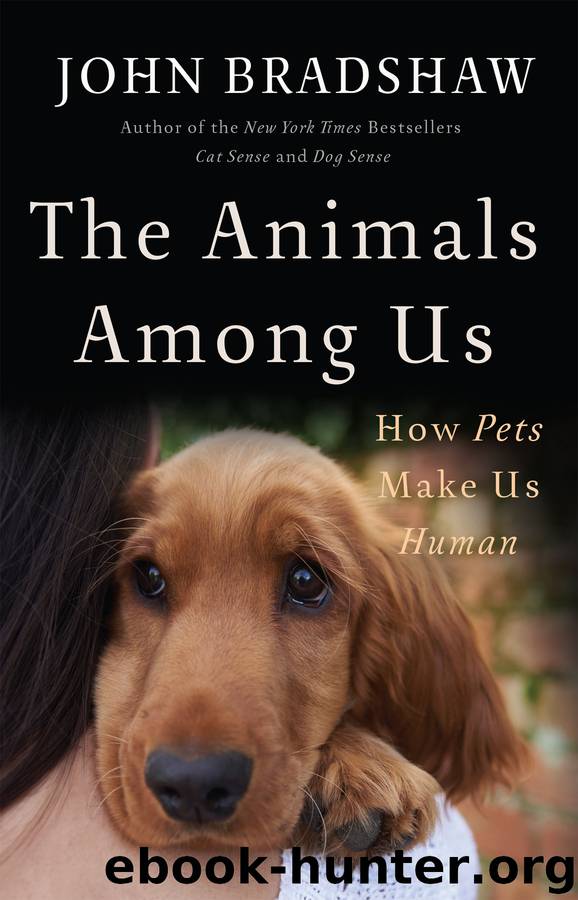The Animals Among Us by John Bradshaw

Author:John Bradshaw
Language: eng
Format: epub
Publisher: Basic Books
Published: 2017-10-01T04:00:00+00:00
A Kewpie elf—its cute features used on a 1914 postcard promoting female suffrage.
Nowadays, other characters have eclipsed Mickey Mouse, most notably Hello Kitty, the ultimate manifestation of two-dimensional anthropomorphized cuteness. Instantly recognizable from her head alone, Hello Kitty (“real” name Kitty White, “born” in London, but invented in Japan in 1974) requires just nineteen black lines to depict her almost total infantilism—round face (sans mouth), tiny nose, and widely spaced (though not large) eyes. The aging demographic of her native land has prompted the globalization of Kitty, who appeals mainly to female children: the first overseas Kitty theme park opened in China in the summer of 2015.10
The teddy bear evolved into its current form along much the same path traveled by Mickey Mouse.11 An exhibition of teddy bears in the Cambridge (England) Folk Museum in the mid-1980s provided an opportunity for two researchers at Cambridge University to test whether the evolution of Mickey Mouse also applied to the teddy bear—and it did. The earliest bear in the collection, dating from 1903, was naturalistic, to the extent of having a long snout (and wearing a muzzle, like a bear in a circus). Gradually, over the following half century, the bears’ heads became larger and rounder, and their foreheads became more prominent; though these changes are not quite the same as those Mickey Mouse underwent, they certainly support the idea that Lorenz’s Kindchenschema drove their “evolution.”12
Of course teddy bears do not breed, so their “evolution” most likely reflected the preferences of the people buying them, many of whom would be women and therefore particularly susceptible to the attractions of the “baby schema.” Indeed, an infant wouldn’t likely prefer a toy that closely mimicked its own features, since the toy might then compete for its mother’s attention (both my grandsons favor their “rabbies”—plush toy rabbits with large soft ears but smaller-than-natural heads). Cuteness does not become a major player until children get older. At around age six, both boys and girls begin to show a preference for baby-like features. When asked to choose their favorite from a selection of adult- and baby-featured bears, seventeen out of twenty-four four-year-olds chose an adult-featured bear, contrasting with the twenty out of twenty-seven eight-year-olds who picked out a baby-featured one.13
Our preference for cuteness powerfully drives the features we prefer in representations of animals, be they soft toys or cartoon characters. Unconstrained by biological realities, creatures such as Mickey Mouse and Hello Kitty prove that given the choice, adult humans prefer the cute over the less cute. Real animals have less scope for change, since they must preserve basic functions—for example, as her forehead enlarged to the cutest possible proportions, Hello Kitty’s mouth all but disappeared, and it’s unclear, given the size of her head in proportion to her feet, how she avoids toppling over. Despite the constraints of reality, abundant evidence shows that cute features affect how people feel about living animals. Moreover, now that fewer and fewer cats and dogs work for their living, we can
Download
This site does not store any files on its server. We only index and link to content provided by other sites. Please contact the content providers to delete copyright contents if any and email us, we'll remove relevant links or contents immediately.
Sapiens: A Brief History of Humankind by Yuval Noah Harari(13035)
Sapiens by Yuval Noah Harari(4526)
Homo Deus: A Brief History of Tomorrow by Yuval Noah Harari(4271)
Pale Blue Dot by Carl Sagan(3993)
Origin Story: A Big History of Everything by David Christian(3132)
Livewired by David Eagleman(3113)
Brief Answers to the Big Questions by Stephen Hawking(2871)
Inferior by Angela Saini(2828)
Origin Story by David Christian(2676)
The Evolution of Beauty by Richard O. Prum(2548)
Signature in the Cell: DNA and the Evidence for Intelligent Design by Stephen C. Meyer(2493)
The Gene: An Intimate History by Siddhartha Mukherjee(2485)
Aliens by Jim Al-Khalili(2374)
How The Mind Works by Steven Pinker(2206)
Sex at Dawn: The Prehistoric Origins of Modern Sexuality by Ryan Christopher(2148)
From Bacteria to Bach and Back by Daniel C. Dennett(2143)
A Short History of Nearly Everything by Bryson Bill(2131)
Endless Forms Most Beautiful by Sean B. Carroll(2078)
Who We Are and How We Got Here by David Reich(2055)
